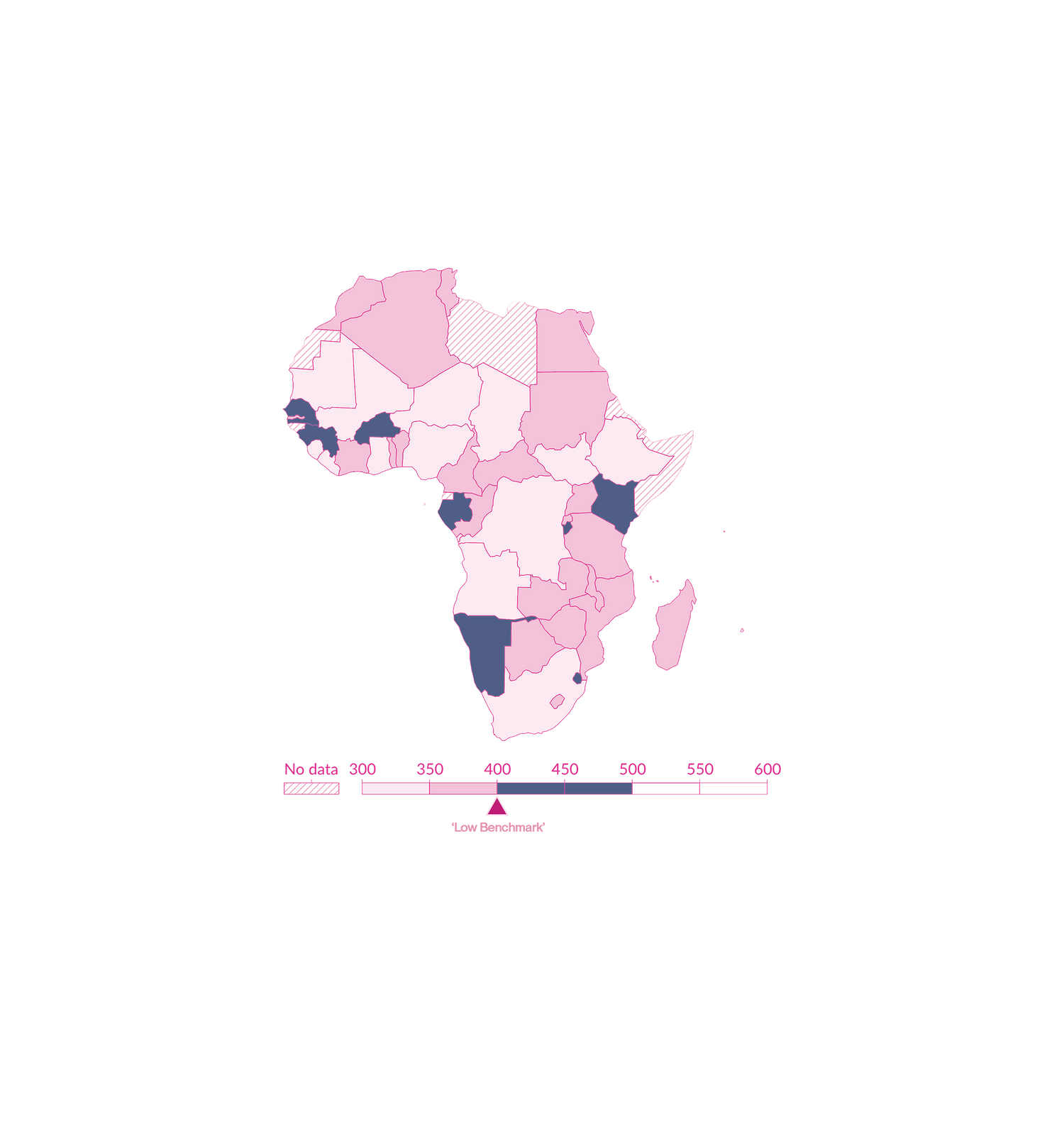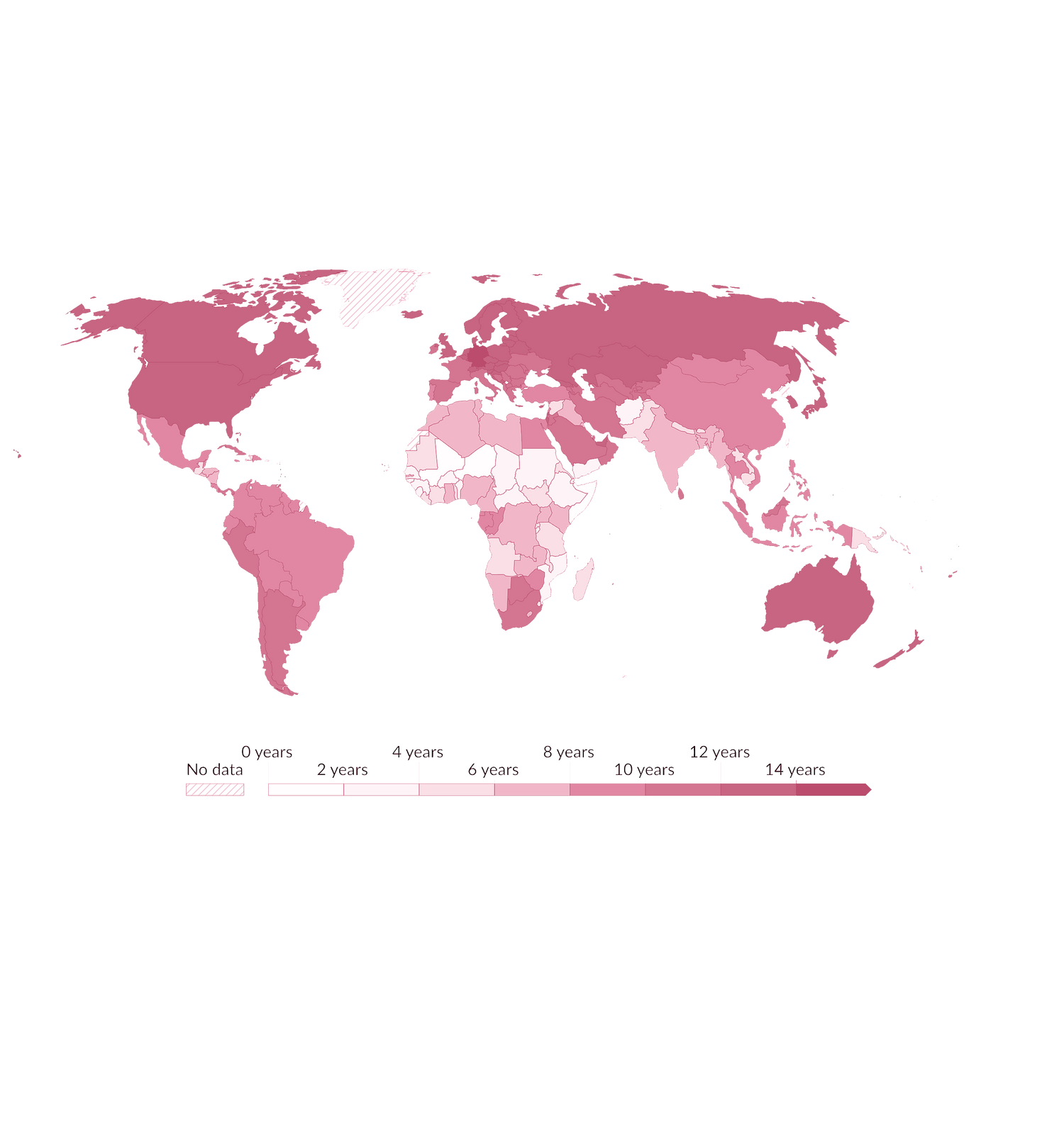Data & Analytics
The LetAllGirls Data & Insights Hub is a growing repository of research, real-world analytics, and key education metrics that reinforce the urgency of our mission. This page compiles data from our deployments, tracking student progress, access to resources, and the overall impact of the DIDI device in underdeveloped regions. By highlighting trends, challenges, and successes, we provide a transparent look at why localized, offline education solutions are essential—and how LetAllGirls is driving measurable change.

WORLD BANK
Low (LAYS)
This map depicts Learning-Adjusted Years of Schooling in Africa, showing how much effective education students receive.
With limited resources, infrastructure, and teacher training, students in these regions face major educational disadvantages, widening long-term opportunity gaps. The global LAYS average is over 9 years.

WORLD BANK
TIMSS Scores
This map displays Trends in International Mathematics and Science Study scores across Africa, measuring student performance in math and science. Many regions fall below the low benchmark, indicating severe gaps in foundational learning. Students in these regions struggle to meet the bare minimum of global education standards.

Barro & LEE
AVG Education Time
This map illustrates the average number of years adults (25+) have spent in formal education.
This contrast highlights the severe educational gap in underdeveloped regions, particularly in Sub-Saharan Africa and parts of South Asia, where many adults have received less than 4 years of education. This reinforces the urgent need for accessible, localized, and scalable learning solutions.
AI's Potential Impact
16x Faster Learning
AI-powered tutoring in underdeveloped regions has enabled students to grasp two years' worth of education in just six weeks. This directly impacts Learning-Adjusted Years of Schooling (LAYS) by accelerating comprehension and reducing long-term learning gaps.
Source: World Bank
42% More Effective Learning
Another study involving high school students in Turkey found that access to AI tutors led to improvements in math performance ranging from 48% to 127%! However, it's important to note that when access to the AI tutors was removed, there was a 17% reduction in educational outcomes, suggesting that continuous access is crucial for sustained benefits.
Source: Education Next
Bridging the Gender Gap
A study in Benin City, Nigeria, found that girls who initially lagged behind boys saw even greater improvements when using AI tutoring. This suggests that AI-driven education can effectively bridge gender disparities by providing personalized, self-paced learning—especially in environments where girls often receive fewer educational opportunities due to social and economic barriers.
Source: World Bank
Student Retention
Study show that students attended more consistently and engaged longer when AI tutoring was introduced. This highlights AI’s potential not just for improving learning outcomes, but for keeping students in school longer—a key challenge in underdeveloped regions where dropout rates are high.
Source: World Bank
